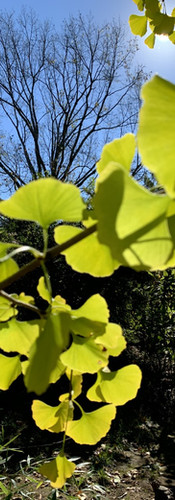Botanist's Lens: Good Time to Be on the Move in the Garden!
- London Town
- Oct 4, 2021
- 2 min read
It is an excellent time to be on the move in the gardens. Fall and early winter are excellent to be on the move for the bare root trees, shrubs, plugs and also bulbs. But the relocation area has to be proactively thought through and planned beforehand. You don't move into a new home without considering all your options, right? Well, that applies to plants as well. Wrong location choice during transplanting is calling for a rapid decline in a plant.
As ground temperatures start dropping in late September to early October, trees, shrubs and bulbs can easily be lifted and transplanted. But why is fall good to be on the move? In fall, the soil temperatures are warm which is key for root growth and in fact it encourages new roots growth which is great for reestablishment.
Also, the change in night and day temperatures signal a tree to slow down on top growth, the foliar growth. "The most common mistakes in transplanting trees are planting too deep, and over or under watering. Careful attention to properly preparing the planting hole greatly increases the odds of successfully transplanting trees."
How to transplant? Here is a neat link: https://extension.tennessee.edu/publi.../Documents/sp572.pdf
Seems easy, but transplanting has to be done with ample planning and preparation. Otherwise, a transplant shock is sure to happen. "Under stressful conditions, plants are unable to recover, continue to decline, and eventually die. Although plant diseases may be responsible, transplant stresses are most often the culprit of death or decline of newly planted trees and shrubs" http://plantpathology.ca.uky.edu/files/ppfs-or-w-19.pdf
If you are establishing a new garden area, I recommend starting with the smallest size of trees, going up not more than 7 gallon pot size. Root damage is minimal when root mass is low and chance of disturbance to the fine roots in reduced.
We will be sharing more on planting bulbs next week. Spring garden planning happens in fall and what better than getting the ephemerals in the ground first!








Commenti